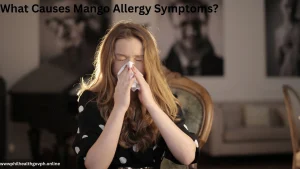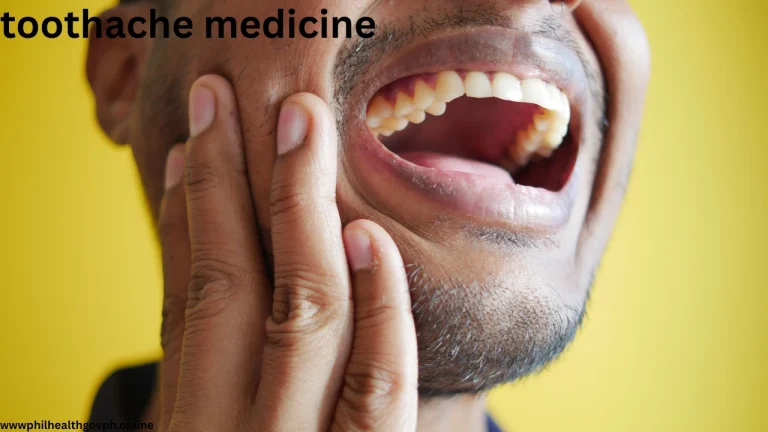Mango Allergy Symptoms: How the Peel Differs from the Flesh
Mangoes are one of the most popular tropical fruits, known for their sweet taste and rich flavor. However, for some individuals, mangoes can cause unpleasant allergic reactions. Mango allergy symptoms can range from mild skin irritation to severe and potentially life-threatening conditions like anaphylaxis.
An allergic reaction occurs when the immune system wrongly identifies certain components in mangoes as harmful. It then releases chemicals like histamines, leading to inflammation and various symptoms. These reactions may occur after eating mango flesh, touching the peel, or even inhaling its scent during preparation. Understanding the different forms of mango allergy symptoms, their causes, and treatment options is essential for proper management.
You May Like: dorsal vein damage symptoms
What Causes Mango Allergy Symptoms?

Mango allergies are usually triggered by the body’s overreaction to proteins or chemicals present in the fruit. The main causes include:
-
Urushiol in Mango Peel
Mango peel contains urushiol, the same chemical found in poison ivy, poison oak, and poison sumac. This compound can cause contact dermatitis, leading to itching, redness, and rashes. -
Protein Allergens in Mango Flesh
Some people react to specific proteins in mango flesh that are similar to those in birch pollen, latex, or certain nuts. This can lead to oral allergy syndrome (OAS) or more generalized allergic responses. -
Cross-Reactivity
People allergic to cashews, pistachios, or latex may also react to mango due to cross-reactive proteins.
Types of Mango Allergy Symptoms
Mango allergy symptoms vary depending on how the allergen enters the body. Some symptoms appear immediately, while others develop hours later.
1. Skin-Related Symptoms
-
Itching or burning sensation after touching mango peel.
-
Redness or swelling on the hands, lips, or face.
-
Blistering or eczema-like rashes, especially in sensitive skin areas.
2. Oral Allergy Syndrome (OAS)
-
Tingling, itching, or swelling inside the mouth.
-
Swollen lips, gums, or tongue.
-
Mild throat irritation, usually within minutes of eating mango.
3. Respiratory Symptoms
-
Sneezing, nasal congestion, or runny nose.
-
Shortness of breath or wheezing in sensitive individuals.
-
Tightness in the chest in more severe cases.
4. Digestive Symptoms
-
Stomach cramps or bloating.
-
Nausea, vomiting, or diarrhea.
-
Abdominal discomfort shortly after consumption.
5. Severe Allergic Reactions (Anaphylaxis)
-
Difficulty breathing or swallowing.
-
Sudden drop in blood pressure.
-
Rapid pulse, dizziness, or loss of consciousness.
-
Requires immediate emergency medical treatment.
Immediate vs. Delayed Mango Allergy Symptoms
Mango allergies can present themselves in two main ways:
-
Immediate Reactions
Occur within minutes of eating or touching mango. Often linked to OAS or severe anaphylactic responses. -
Delayed Reactions
Appear 12–48 hours later, usually as contact dermatitis or persistent rashes from urushiol exposure.
Mango Peel vs. Mango Flesh Reactions
The part of the mango you react to can influence the type of symptoms you experience.
-
Mango Peel Reactions
Most commonly caused by urushiol. Symptoms include itching, rash, and blistering around the mouth, lips, and hands. -
Mango Flesh Reactions
Often due to protein allergens. These can trigger OAS, swelling in the mouth, or digestive discomfort.
High-Risk Groups for Mango Allergy
Some people are more susceptible to mango allergy symptoms, including:
-
Individuals allergic to poison ivy, oak, or sumac.
-
People with latex allergy.
-
Those allergic to cashews or pistachios.
-
Individuals with pollen allergies, especially birch pollen.
Diagnosing Mango Allergy Symptoms
If you suspect a mango allergy, a doctor or allergist may use several methods to confirm it:
-
Skin Prick Test
Detects immediate allergic reactions by exposing the skin to small amounts of mango proteins. -
Patch Test
Identifies delayed skin reactions like contact dermatitis. -
Blood Test
Measures IgE antibodies to confirm allergic response.
Managing Mango Allergy Symptoms
1. Avoidance
The most effective way to manage mango allergy is to avoid contact entirely.
-
Refrain from eating mango flesh if you react to it.
-
Avoid touching mango peel if urushiol is the trigger.
-
Use gloves while handling mango to prevent skin contact.
2. Medical Treatment
-
Antihistamines can relieve itching, swelling, and hives.
-
Topical corticosteroid creams help reduce inflammation from skin reactions.
-
Epinephrine auto-injectors are essential for those with a history of severe reactions.
3. Home Remedies
-
Apply cold compresses to soothe rashes.
-
Use aloe vera gel to reduce skin irritation.
-
Rinse your mouth with cold water after eating mango to minimize OAS discomfort.
Preventing Mango Allergy Symptoms
Prevention is the best way to avoid discomfort.
-
Always wash mangoes thoroughly before peeling.
-
Avoid direct contact with mango peel if you have known sensitivity.
-
Use clean utensils and cutting boards to prevent cross-contact.
-
Educate friends and family about your allergy to avoid accidental exposure.
Mango Allergy in Children
Children can also develop mango allergies, often showing symptoms such as:
-
Itchy rashes around the mouth and hands.
-
Swelling of the lips or eyes.
-
Stomach upset after eating mango.
Parents should introduce mango in small amounts and watch for reactions. If symptoms occur, seek medical attention immediately.
Long-Term Outlook for Mango Allergy
For most people, mango allergy is manageable through avoidance and awareness. While mild cases may improve over time, severe allergies often require lifelong caution. Carrying emergency medication and wearing a medical alert bracelet can be life-saving in emergencies.
Living With Mango Allergy
Living with a mango allergy means being vigilant about what you eat and touch. Many packaged foods, juices, smoothies, or desserts may contain mango without being obvious. Always read ingredient labels and ask about food contents when dining out.
When to Seek Medical Help
You should seek immediate medical care if:
-
Breathing becomes difficult.
-
Swelling spreads rapidly.
-
You feel dizzy or faint.
-
Symptoms worsen despite taking medication.
Possible Complications of Mango Allergy Symptoms
If untreated, mango allergies can cause:
-
Persistent skin inflammation.
-
Secondary infections from scratching rashes.
-
Severe anaphylactic episodes.
Prompt treatment and prevention are key to avoiding these complications.
Cross-Reactive Allergens and Mango Allergy
Mango belongs to the Anacardiaceae family, which also includes cashew, pistachio, and poison ivy. This explains why some individuals allergic to these plants also react to mango. Pollen-related cross-reactivity may also trigger OAS in mango-allergic individuals.
Myths About Mango Allergy Symptoms
-
Myth 1: Only mango peel causes allergies.
Fact: Both peel and flesh can cause reactions, depending on the allergen involved. -
Myth 2: Cooking mango removes allergens.
Fact: Heating may reduce some allergen activity but does not eliminate risk. -
Myth 3: Mango allergies are always severe.
Fact: Many people experience only mild symptoms like itching or rashes.
Practical Tips for Mango-Allergic Individuals
-
Inform restaurant staff about your allergy.
-
Avoid pre-cut fruit mixes that might contain mango.
-
Keep antihistamines in your travel bag.
-
Educate children on identifying mango to prevent accidental exposure.
Mango Allergy Symptoms During Pregnancy
Pregnant women with mango allergies must be extra cautious, as symptoms can be more uncomfortable during this time. Reactions may include itching, swelling, and digestive discomfort. Medical advice is necessary before consuming mango if allergic tendencies are known.
Even mild mango allergy symptoms can cause stress during pregnancy. Avoidance and safe food choices help prevent allergic episodes. Doctors may recommend alternative fruits with similar nutrients.
Mango Allergy Symptoms in Infants and Toddlers
Infants may experience rashes, facial redness, or swelling shortly after consuming mango for the first time. Mango peel contact can trigger skin irritation in sensitive babies. Parents should watch for changes within 30 minutes of consumption.
Mango allergy symptoms in toddlers can also include diarrhea, fussiness, and excessive scratching. Pediatric consultation is important if symptoms appear, especially with a family history of allergies.
Frequently Asked Question
What are the most common mango allergy symptoms?
They include itching, rashes, swelling, oral irritation, and sometimes digestive discomfort.
Can mango allergy symptoms be life-threatening?
Yes, severe cases can cause anaphylaxis, requiring immediate medical attention.
Why do mango allergy symptoms happen after touching the peel?
The peel contains urushiol, which can trigger skin irritation and blistering.
Are mango allergy symptoms more common in people with other allergies?
Yes, those allergic to poison ivy, cashews, pistachios, or latex are at higher risk.
How can I prevent mango allergy symptoms?
Avoid eating mango, wear gloves when handling it, and check food labels carefully.
Conclusion
Mango allergy symptoms can affect the skin, mouth, respiratory system, and digestive tract. They range from mild rashes and itching to severe, life-threatening reactions like anaphylaxis. People with related allergies to poison ivy, nuts, or latex should exercise extra caution.
With accurate diagnosis, proper avoidance strategies, and medical treatment when needed, living with a mango allergy is entirely manageable. Being informed and prepared can make all the difference in preventing uncomfortable or dangerous reactions. If you suspect an allergy, consult a healthcare professional for testing and personalized advice.
People Also Read: anemia symptoms eyes






